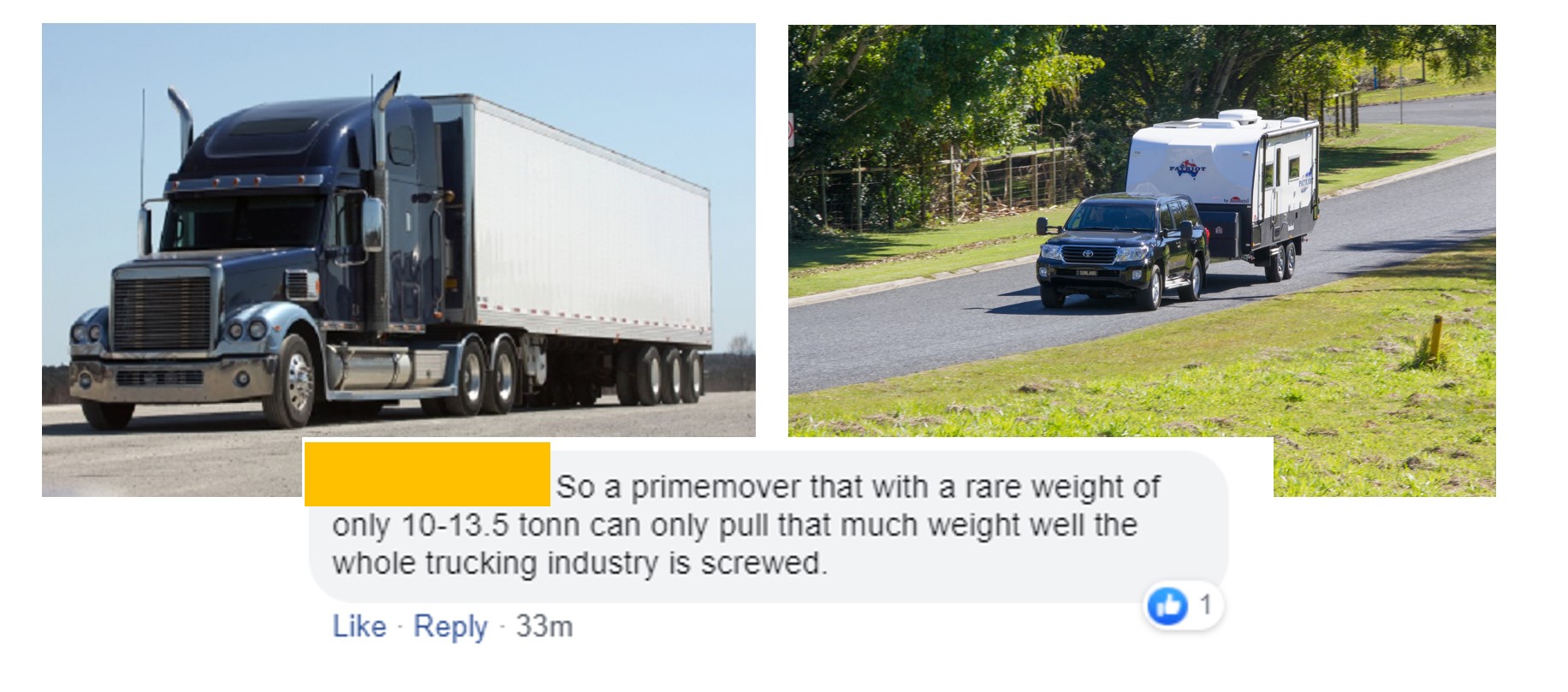
Why a prime mover and trailer isn’t the same as a towcar and caravan
Caravan towing safety is becoming more and more of a problem; van makers consistently state weights which are lighter than the reality, and towcar makers overstate the ability of their cars to tow. And, van makers appear to pay abolsutely no attention to trailer dynamics beyond fitting shiny independent suspension and calling it good – I’d be very happy to be proven wrong on this point so get in touch if you’re a van maker who has designed and tested products for dynamic stability.
Now one good way to fix a lot of stability problems is to ensure the trailer is lighter than the towcar. You can see the reasons why in this video:
While the relative weight rule is good, you can have a light trailer which is unstable, and a heavy one that is stable, but the above is a good start. Yet whenever this point is made, someone on a caravan forum inevitably says:
“So you’re saying the towing vehicle MUST ALWAYS be heavier than the trailer? SO YOU’RE SAYING ALL THE PRIME MOVERS ARE ILLEGAL AND SHOULD BE OFF THE ROAD??????”
No, we’re not saying that at all. That’s a misconception delivered by a strawman. Because the two are very different. Just look at the photo in the title…play spot the difference for a while and then consider what those differences mean. Thanks to Don Incoll for these images:
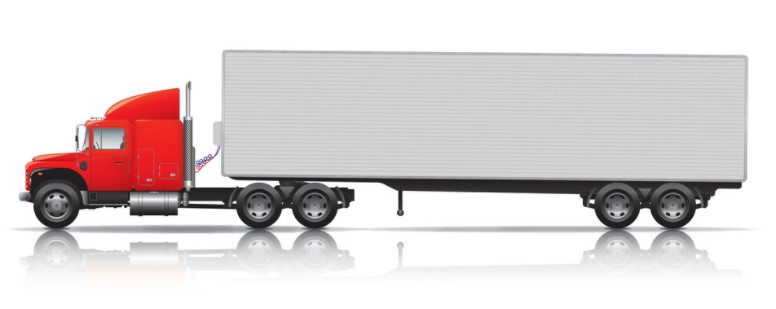
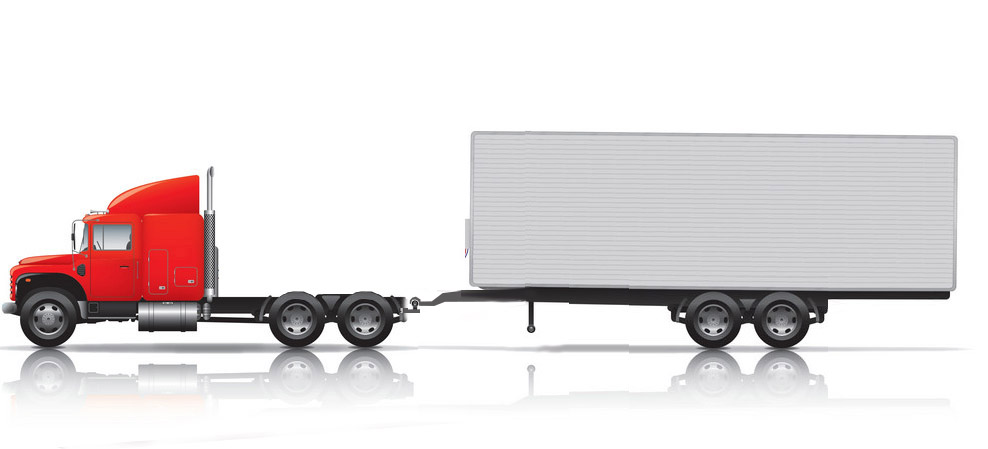
Anyway, I asked my readers how best to explain that a prime mover and trailer is not, in fact, equivalent to a prime mover and trailer. Here’s their responses:
Daniel Hose: A semi trailer has a fifth wheel turntable. The weight of the trailer is transferred to the prime mover. A standard semi trailer with a single steer axle, bogie drive and triaxle trailer has a GVM of 42.5T. The breakdown of that is 6.0t on the steer, 16.5 on the bogie and 20 on the triaxle. So a fully laden semi will have 22.5 ton on the prime mover axles and 20 ton on the trailer. In my books that means the tow vehicle is heavier than the trailer!
MadMatt 4wd There’s a massive difference between a tow bar hitch and the fifth wheel concept (not sure what the correct term is for a trucks hitch). But having the trailer load over the axle reduces much of the tail wagging the dog effect.
Robert Mead: For me it would be around the specialist design of the prime mover vs cars. Hitch point above or in front of rear wheels, multiple rear wheels, vehicle construction, width and spring hardness all dramatically change force application and effects, making it a totally different scenario to cars/4wds and standard hitching.
Kyam Shapcott: The weight distribution over the number of axles allows for better towing . A truck can’t have all its load on the rear axles and none on the drive ( basically a caravan behind a Ute )
Peter Heuke: Look where the weight sits. A semi has 1/2 the weight sitting on the back of the prime mover and all the weight between the front and rear wheels. A standard trailer is pretty much seesaw. Now how much more stable is a bridge compared to a seesaw?
Chris Wilson: The axle weights for a typical prime mover generally become 6-6.5 on the steer and 17-17.5 on the drive making a total of 23-24 ton. As we know, the tri-axle weight on the trailer is 22-22.5 ton, thereby equal or less than the sum total of the towing vehicle. Note – different calculations for twin steer or prime movers with tri-axles.
Tony Collins: A trailer attaches to a prime mover forward of the PM rear axle, so the trailer load at the “hitch” effectively becomes part of the PM mass. This geometry also reduces lateral forces at the rear of the trailer ( compared to a hitch behind the rear axle of a tow vehicle). The advice to have tow vehicle mass more than trailer (for caravans) is well supported by stability tests.
You can also read the Truck Friendly post on the subject here.
I also cover the question in the video below. So, what’s your preferred way to explain this to people?

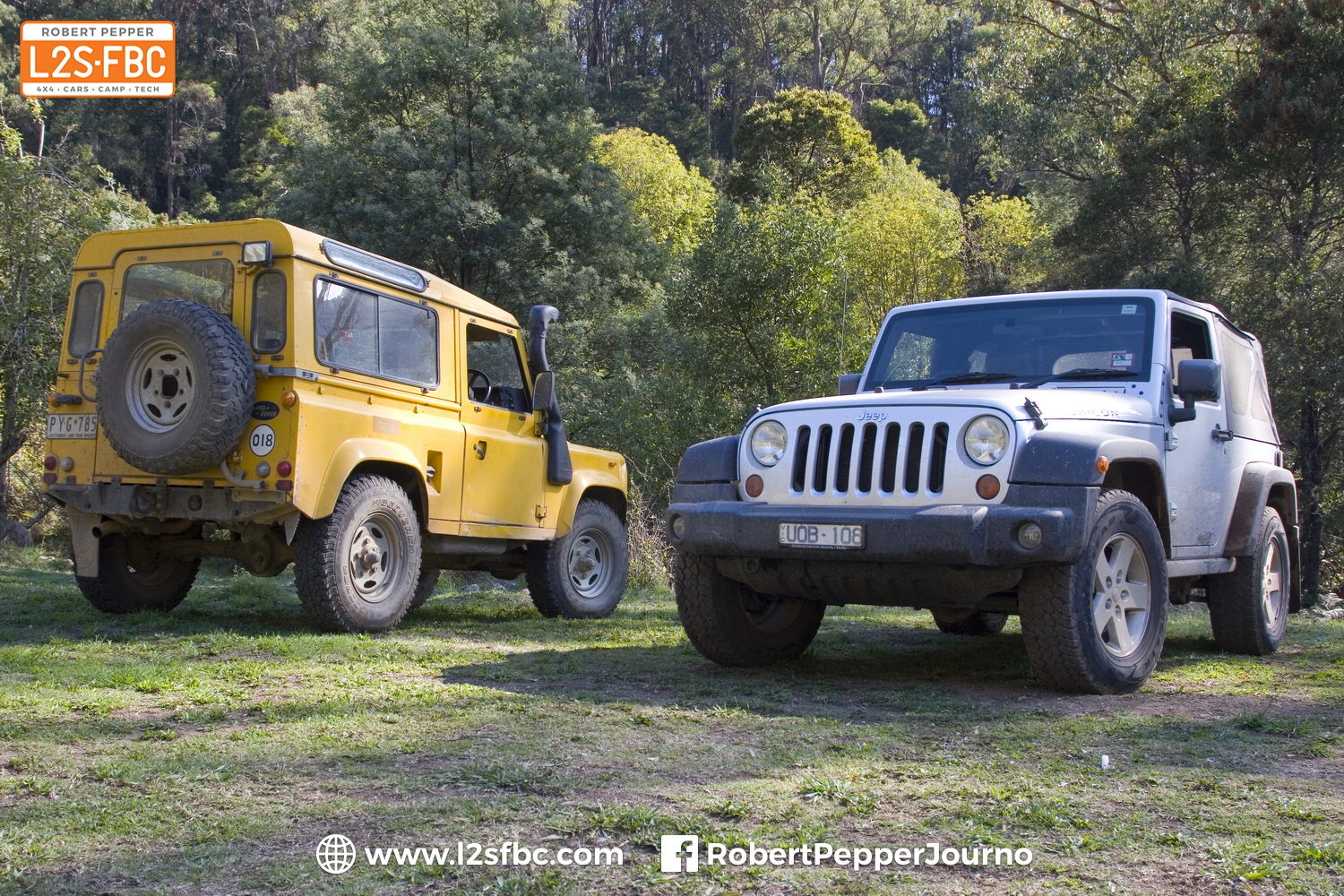
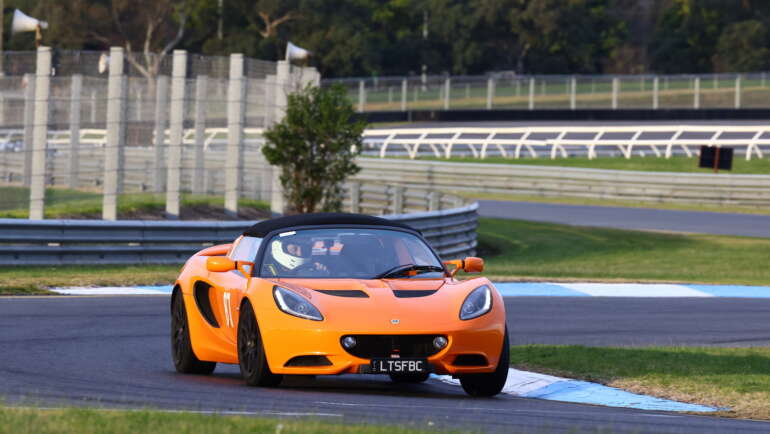
1 Comment
by Madmatt
Excellent discussion as always Robert. Unfortunately in this day and age the voice of authority will get drowned out by those who are convinced by their own wisdom based on information gained from those who have also become wise in their own eyes. Humility around ones knowledge is rarely seen and yet desperately needed.